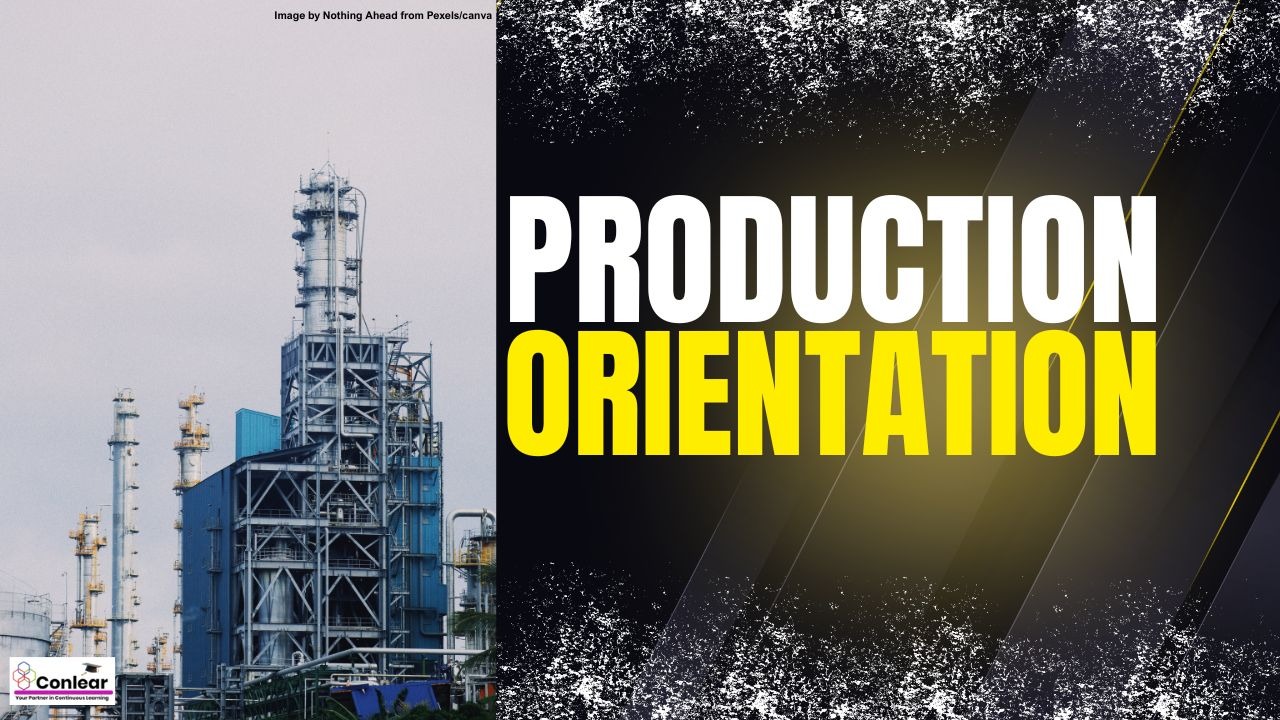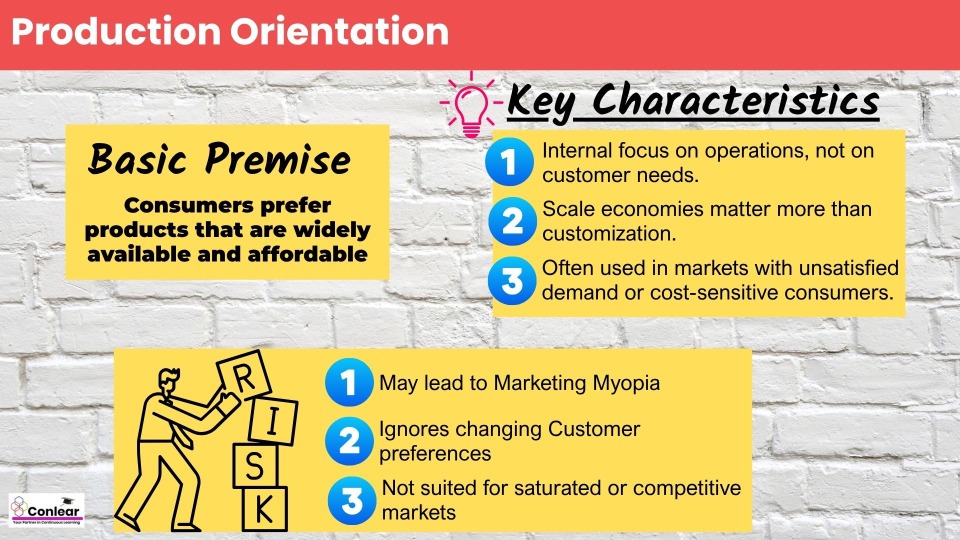There are no items in your cart
Add More
Add More
| Item Details | Price | ||
|---|---|---|---|

"Any customer can have a car painted any color he wants, so long as it is black." — Henry Ford
Marketing, as a discipline, has evolved through various orientations or philosophies over time. These orientations reflect how businesses perceive the market and prioritize their activities to reach and serve customers. One of the earliest and most foundational orientations is the Production Orientation. This concept underpins the idea that consumers prefer products that are affordable and widely available, and therefore, organizations should focus on achieving high production efficiency and wide distribution.
Production orientation is a marketing philosophy in which a company focuses primarily on the efficiency of its production and distribution processes. The underlying assumption is that customers are primarily interested in product availability and low prices, and if a company can manufacture products efficiently and at scale, customers will naturally prefer them.
Definition: Production orientation refers to the idea that consumers will favour products that are available and highly affordable; therefore the organization should focus on improving the production and distribution efficiency (Principles of Marketing,19e - Philip Kotler).

Companies following a production-oriented approach typically operate based on the following assumptions:
These assumptions often hold true in early stages of industrialization, in price-sensitive markets, or in industries where customer preferences are relatively undifferentiated.
Production orientation has its roots in the Industrial Revolution, when technological advancements made it possible to produce goods at scale. At that time, demand for products often exceeded supply, and consumers were less concerned with brand or product differentiation. The main challenge for businesses was to produce enough to meet demand.
In India, the production orientation model was widely evident during the post-independence industrialization era and even in the early liberalization phase.
Lorem Ipsum is simply dummy text of the printing and typesetting industry. Lorem Ipsum has been the industry's standard dummy text ever since the 1500s, when an unknown printer took a galley of type and scrambled it to make a type specimen book.The launch of the Maruti 800 in the 1980s is a prime Indian example. At that time, India faced a shortage of affordable personal transport options. Maruti Suzuki focused on producing a basic, fuel-efficient, and cost-effective car for the masses. The car’s design was simple, features were limited, and choices were few — but it was affordable and available. The result: the Maruti 800 became an iconic success, dominating India’s car market for over a decade.
When applied in the right market context, production orientation offers several benefits:
Despite its benefits, the production orientation has significant limitations in modern, customer-centric markets:
Production orientation is a historically significant marketing philosophy that emphasizes operational efficiency, cost leadership, and broad accessibility. While it laid the foundation for mass market success during the industrial and early post-industrial eras, its limitations in addressing dynamic customer preferences have become increasingly evident. In today’s world, while elements of production orientation remain useful, especially for cost-sensitive markets, they must be blended with modern marketing approaches that put the customer at the center.

Vinayak Buche
Vinayak is the Founder of Conlear Education.